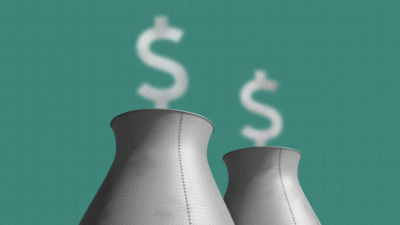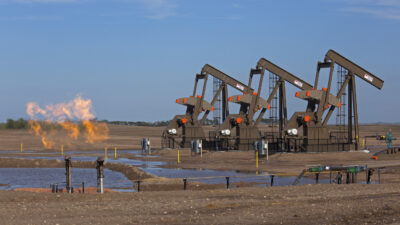Oil Prices Spike as Israel-Iran Conflict Threatens Production, Shipping
With no immediate end in sight, analysts are weighing multiple possibilities that could affect prices down the line.

Sign up for smart news, insights, and analysis on the biggest financial stories of the day.
Just like your one CNN-obsessed uncle, the price of oil is sensitive to big geopolitical events.
And with that uncle glued to the TV on Tuesday, the world’s two leading oil benchmarks rose more than 4% as an armed conflict between Israel and Iran that broke out on June 13 stretched into its fifth day. With no immediate end in sight, analysts are weighing multiple possibilities that could affect prices down the line.
The Strait and Narrow
Even with US sanctions, Iran remains the third-largest oil producer in the Organization of the Petroleum Exporting Countries (OPEC), pumping 3.3 million barrels of crude oil daily and exporting 1.7 million of them. ING analysts said last week that losing this export supply would be enough to erase a global oil market surplus forecast for this year — in March, the International Energy Agency predicted a roughly 600,000 barrels-per-day oversupply for 2025. That surplus, they forecast, would have led to prices trending lower in 2026. Without it, Brent crude prices could climb as high as $80 a barrel, though they will more probably settle at $75. (Brent crude futures closed at $76.45 a barrel on Tuesday, up 4.4%, and US West Texas Intermediate crude closed at $74.84 a barrel, up 4.3%.)
Whether oil prices remain elevated long-term depends entirely on how the conflict plays out or whether it continues (the Trump administration has offered mixed messages about its desire to broker peace). Both sides have targeted energy infrastructure: Iran, for example, had to temporarily pause some operations at the South Pars field, the world’s largest gas field, after it was hit by an Israeli air strike on Saturday. ING’s analysts noted that further targeting of upstream assets would have a greater impact on the global oil market by crunching the export supply. But there’s an even more acute risk:
- An extended conflict could disrupt shipping in the Strait of Hormuz, the only sea route from the Persian Gulf to the open ocean, and thus one of the most strategically important maritime passages on Earth. Nearly a third of the world’s seaborne oil is funneled through the channel, which is a mere 29 nautical miles wide at its narrowest point.
- ING’s analysts calculated that 14 million barrels of oil supply per day might be at risk. In a worse scenario, they wrote, a major disruption in the strait might drive Brent crude prices up to a whopping $120 a barrel by the end of the year, well above the $147.50 high set during the 2008 financial crisis.
BIMCO, the world’s largest international shipping association, told CNBC on Monday that some shipping groups are already steering clear of the strait.
Double Trouble: But wait, the Hormuz dominos don’t end there. European natural gas prices jumped nearly 5% Friday and were at the highest levels since early April on Tuesday. That’s because Qatar, which accounts for a fifth of the global liquified natural gas (LNG) trade, exports through the Strait, meaning the LNG market is also under threat of severe tightening.











